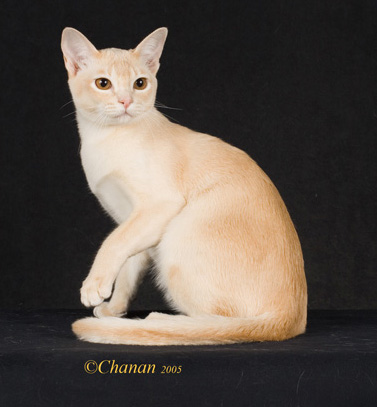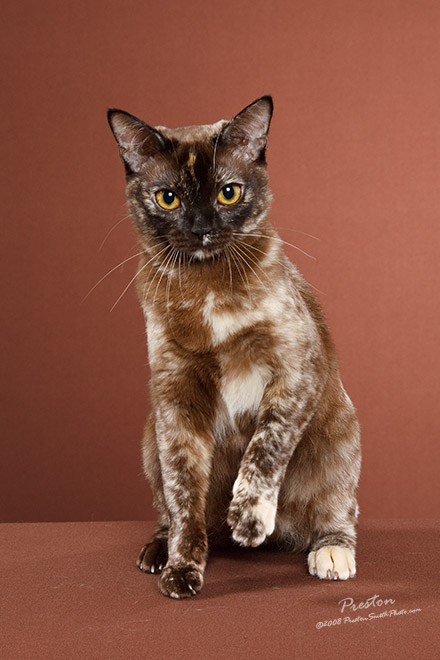European Burmese
10 colors
| Color | |
| BROWN - The brown European Burmese should be a rich, warm seal brown color; however, degrees of shadings exist with some browns being slightly lighter or darker. (Kittens are often lighter in color but will darken with maturity.). |

 |
| CHOCOLATE - The chocolate European Burmese can vary from a light to a dark honey beige. A warm milk-chocolate color is preferred in the show ring. Slight darkening on ears and face is common. |  |
| BLUE - The blue European Burmese is a soft, silver blue-gray with some blues having a slight warm tone. |

 |
| LILAC - The lilac European Burmese should be a pale, delicate dove-gray color with a slight pink cast. |

 |
| RED - The red European Burmese should be a warm, orange apricot color. Slight tabby markings permitted on the face. Small indeterminate markings permitted elsewhere (except on the side or belly) on an otherwise excellent cat. Kittens and adolescents may have faint tabby markings and a lighter color. |

|
| CREAM - The cream European Burmese should be a rich cream color, although some creams tend to have a slight peachy tone. Regardless of the cream shade, all have a slight "powdery" effect. Small indeterminate markings permitted elsewhere (except on the side or belly) on an otherwise excellent cat. Kittens and adolescents may have faint tabby markings and a lighter color. |

 |
| BROWN TORTIE - The brown tortie European Burmese should have red and seal brown distributed in patches over the whole body. The red parts can show various shades of the color. The markings on a brown tortie are very distinct due to the intensity of the colors. This makes each cat considerably striking and unique. |

 |
| CHOCOLATE TORTIE - The chocolate tortie European Burmese should have milk chocolate and red distributed in patches over the whole body. The red parts can show various shades of the color. Chocolate torties are also unique in their markings but are more refined due to the lighter colors involved. |

 |
| BLUE TORTIE - The blue tortie European Burmese should have pale tones of blue-gray and cream distributed in patches over the whole body. The cream parts can show various shades of the color. The blue tortie's markings are softened and subtle due to the dilute factors of both the blue and cream. |
 |
| LILAC TORTIE - The lilac tortie European Burmese should have lilac and pale cream distributed in patches over the whole body. The cream parts can show various shades of the color. The tortie markings on a lilac tortie are the most subdued and delicate of all the torties. | 
 |
Webmaster: Ann-Louise De Voe (email)
Copyright©Worldwide European Burmese Society